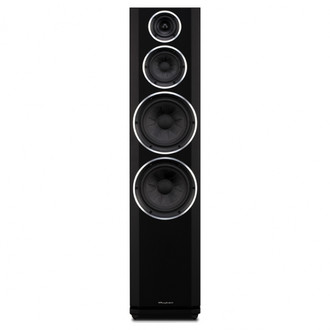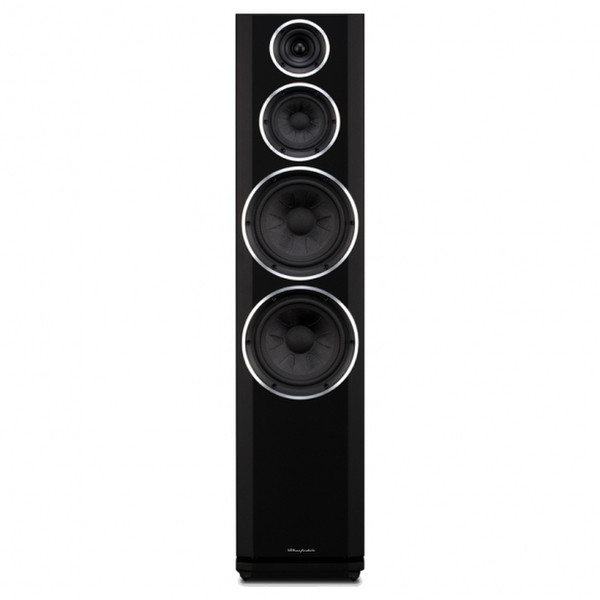Catalog
-
Catalog
- Antiquitäten & Kunst
- Auto & Motorrad: Fahrzeuge
- Baby
- Business & Industry
- Bücher
- Camping & Outdoor
- Feinschmecker
- Garten & Terrasse
- Haushalt & Wohnen
- Haustierbedarf
- Heimwerken & Garten
- HiFi & Audio
- Home, Construction, Renovation
- Household appliances
- Kleidung & Accessoires
- Modellbau
- Musik
- PC- & Videospiele
- Photo & camcorders
- Sammeln & Seltenes
- Spielzeug
- TV, Video, DVD
- Telekommunikation
- Uhren & Schmuck
- Wellness & Beauty
- computers & electronics
- entertainment & hobby
- fashion & lifestyle
- food, beverages & tobacco
- garden & patio
- health & beauty
- institutional food services equipment
- medical equipment, accessories & supplies
- office
- sports & recreation
- vehicles & accessories
- weapons & ammunition
Filters
Search

Wharfedale Diamond 159
EAN: 5025941140887
MPN: 5025941140887
🚚 Select the country of delivery:
Delivery from:
Germany
Sale and delivery by:
Where to buy and prices (Advertising *)
On Top
Technical specifications
On Top
Loudspeakers
| Woofer | Y |
|---|---|
| Number of mid-range drivers | 1 |
| Number of tweeter drivers | 1 |
| Number of drivers | 4 |
| Number of speakers | 1 |
| Tweeter | Y |
| Number of woofer drivers | 2 |
| Driver cone material | Kevlar |
| Recommended usage | Speaker set unit |
| Mid-range driver diameter | 130 mm |
| Woofer diameter | 200 mm |
| Tweeter diameter | 25 mm |
Performance
| Bass reflex | Y |
|---|
Audio
| Sensitivity | 89 dB |
|---|---|
| Frequency range | 35 - 20000 Hz |
| Impedance | 8 Ω |
Diamond 159, 3-way Floorstanding Speaker, Bass Reflex, Cinnamon Cherry
Driver Performance
As you would expect from a series of this stature, the Diamond 100 is bang up to date in terms of
technology and performance. Foremost in the design criteria for Diamond 100 is the ongoing research into loudspeaker driver sound quality. To that end the famous Wharfedale Woven Kevlar cone was put under the technology spotlight and given a new profile based on the research originally carried out for the high-end Jade range. Incorporated in the low frequency and midrange cones are semi-elliptical ‘break-up’ areas which smooth the response throughout the audible range. In addition each surround is treated to match the cone edge with a unique ‘Diamond Pattern’ moulding. Finally the dust cap is blended and
treated to provide a smooth transition and perfect acoustic match to the treble unit. The treble unit chosen for Diamond 100 came under equal scrutiny during development. As well as selecting a sheer fabric dome and advanced ferrite magnet system, the dome is surrounded by a carefully crafted wave guide that encourages outstanding midrange performance.
Cabinet Design
Naturally cabinet design was not forgotten in amongst all the other technology. Rectilinear cabinet shapes were chosen to maximize the internal volume and provide the deepest, most extended bass response. Again the research from the high-end Jade series was incorporated to elicit the latest advance in loudspeaker reflex loading – the Slot-Loaded Distributed Port. Exiting at the base of the speaker cabinet, the reflex port is loaded by a slot created by the plinth. This equalises the air pressure to mimic that inside
the cabinet allowing smooth transition between the pressure variation in the cabinet and the low frequency sound developed in the room. Cabinet walls and internal bracing were also incorporated in the ‘Virtual Speaker’ model, with the help of Delayed Cumulative Spectral Analysis that ruthlessly reveals panel coloration in all its forms. Using this technique Wharfedale engineers formulated a cabinet panel construction of multi-grain faceted boards bonded together to damp annoying High-Q resonances and block internal sound leakage. The effect is that the ‘noise’ from cabinet walls is buried more than 35dB below the driver output. In Diamond 100 all you hear is crystal clear music from the drive units without
any attendant coloration from the cabinet. Again computer analysis helped refine this novel technique, but the result is an audibly superior bass performance of great articulation and clarity.
As you would expect from a series of this stature, the Diamond 100 is bang up to date in terms of
technology and performance. Foremost in the design criteria for Diamond 100 is the ongoing research into loudspeaker driver sound quality. To that end the famous Wharfedale Woven Kevlar cone was put under the technology spotlight and given a new profile based on the research originally carried out for the high-end Jade range. Incorporated in the low frequency and midrange cones are semi-elliptical ‘break-up’ areas which smooth the response throughout the audible range. In addition each surround is treated to match the cone edge with a unique ‘Diamond Pattern’ moulding. Finally the dust cap is blended and
treated to provide a smooth transition and perfect acoustic match to the treble unit. The treble unit chosen for Diamond 100 came under equal scrutiny during development. As well as selecting a sheer fabric dome and advanced ferrite magnet system, the dome is surrounded by a carefully crafted wave guide that encourages outstanding midrange performance.
Cabinet Design
Naturally cabinet design was not forgotten in amongst all the other technology. Rectilinear cabinet shapes were chosen to maximize the internal volume and provide the deepest, most extended bass response. Again the research from the high-end Jade series was incorporated to elicit the latest advance in loudspeaker reflex loading – the Slot-Loaded Distributed Port. Exiting at the base of the speaker cabinet, the reflex port is loaded by a slot created by the plinth. This equalises the air pressure to mimic that inside
the cabinet allowing smooth transition between the pressure variation in the cabinet and the low frequency sound developed in the room. Cabinet walls and internal bracing were also incorporated in the ‘Virtual Speaker’ model, with the help of Delayed Cumulative Spectral Analysis that ruthlessly reveals panel coloration in all its forms. Using this technique Wharfedale engineers formulated a cabinet panel construction of multi-grain faceted boards bonded together to damp annoying High-Q resonances and block internal sound leakage. The effect is that the ‘noise’ from cabinet walls is buried more than 35dB below the driver output. In Diamond 100 all you hear is crystal clear music from the drive units without
any attendant coloration from the cabinet. Again computer analysis helped refine this novel technique, but the result is an audibly superior bass performance of great articulation and clarity.
-
Payment Methods
We accept:











